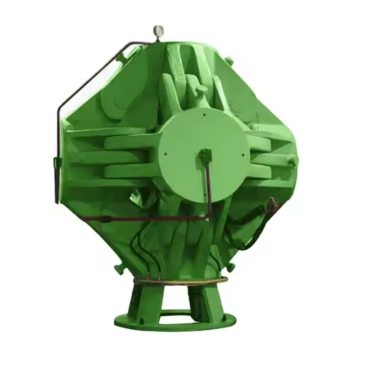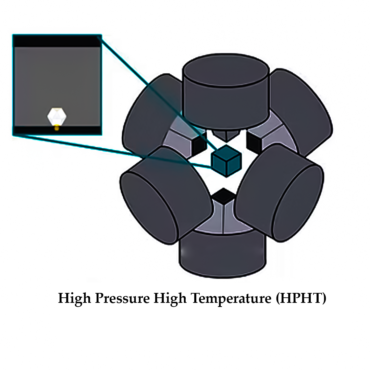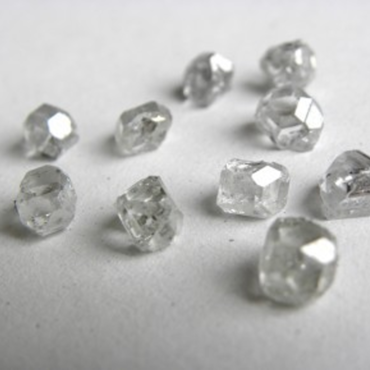How Are High Pressure High Temperature (HPHT) Diamonds Created?
Diamonds have long been considered the ultimate symbol of beauty, luxury, and rarity. While natural diamonds take millions to billions of years to form under Earth's surface, advancements in technology have made it possible to create diamonds in laboratories within a matter of weeks. One of the most popular methods for growing lab-grown diamonds is the High Pressure High Temperature (HPHT) process. This technique replicates the natural conditions under which diamonds form deep within the Earth’s mantle. In this blog, we will explore the HPHT process in detail, from its origins to its role in the jewelry industry today.
What is the HPHT Process?
The HPHT (High Pressure High Temperature) process is a diamond growth technique that mimics the natural formation of diamonds by subjecting carbon to extreme pressure and temperature conditions. This method was first developed in the 1950s and has since been refined to produce high-quality gem-grade diamonds. HPHT diamonds have the same physical, chemical, and optical properties as natural diamonds, making them virtually indistinguishable without specialized testing.
The Science Behind HPHT Diamond Growth
To create an HPHT diamond, scientists replicate the conditions found more than 150 kilometers (93 miles) beneath the Earth’s surface, where natural diamonds form. The process involves the following key steps:

- Selection of a Diamond Seed
Every HPHT diamond starts with a tiny seed crystal, which is usually a small sliver of an existing diamond. This seed provides the structural framework necessary for the new diamond to grow.
- Carbon Source Placement
A source of carbon—often graphite or diamond powder—is placed alongside the diamond seed. Carbon is the essential building block of all diamonds.
- Extreme Pressure and Temperature Application
The diamond seed and carbon source are placed inside an HPHT press, which applies extreme conditions:
- Pressure: 5-6 GigaPascals (GPa), equivalent to about 725,000 to 870,000 pounds per square inch (psi).
- Temperature: 1,300°C to 1,600°C (2,372°F to 2,912°F).
These conditions cause the carbon atoms to dissolve into a molten metal flux, which then begins to deposit onto the diamond seed, gradually crystallizing into a larger diamond.


- Crystal Growth Phase
Over a period of days to weeks, the diamond grows as additional carbon atoms attach to the crystal lattice of the seed. The growth process is carefully monitored to ensure uniformity and high quality.
- Cooling and Extraction
Once the diamond has reached the desired size, the pressure and temperature are slowly reduced. The rough diamond is then carefully extracted from the growth cell.
- Cutting and Polishing
After extraction, the diamond is analyzed and cut into a desired shape. Skilled gem cutters use precision tools to maximize its brilliance, just as they would with a natural diamond.
Types of HPHT Machines
Several types of HPHT presses are used in diamond synthesis:
- Cubic Press: Uses six anvils to apply pressure from multiple directions.
- Belt Press: One of the oldest methods, applying pressure from two opposing sides.
- Split-Sphere (BARS) Press: The most advanced and efficient HPHT system, capable of producing high-quality gem-grade diamonds.

Uses of HPHT Diamonds
HPHT diamonds are used in various applications, including:
- Jewelry: HPHT diamonds are cut, polished, and set in fine jewelry, offering a more affordable alternative to natural diamonds.
- Industrial Applications: Due to their exceptional hardness, HPHT diamonds are used in cutting tools, drills, and abrasives.
- Diamond Enhancement: Some natural diamonds undergo HPHT treatment to improve color or clarity, transforming them into more desirable gemstones.
Identifying HPHT Diamonds
While HPHT diamonds are chemically identical to natural diamonds, they can sometimes be identified using advanced gemological techniques. Some indicators include:
- Metallic Inclusions: Traces of metals such as iron or nickel from the growth process.
- Distinct Growth Patterns: HPHT diamonds exhibit unique internal growth structures under high magnification.
- Fluorescence Properties: Some HPHT diamonds exhibit different fluorescence patterns compared to natural diamonds.
Conclusion
The HPHT process has revolutionized the diamond industry by providing a sustainable and ethical alternative to natural diamonds. These lab-grown diamonds possess the same beauty, brilliance, and durability as their natural counterparts, making them an excellent choice for jewelry and industrial applications. Whether you are considering an HPHT diamond for an engagement ring or simply want to learn more about how they are created, understanding this fascinating process enhances appreciation for these extraordinary gems.